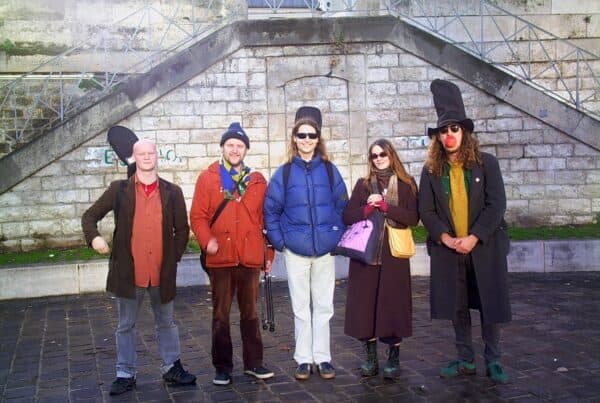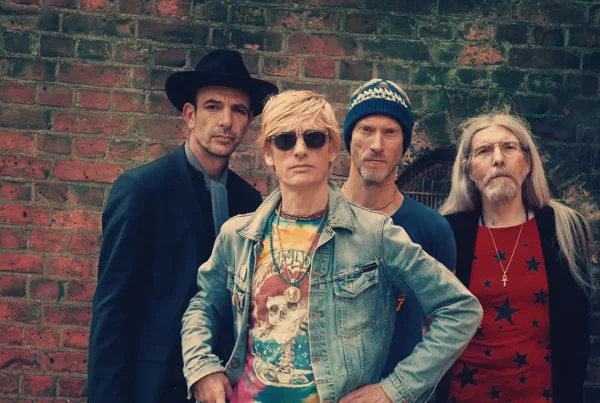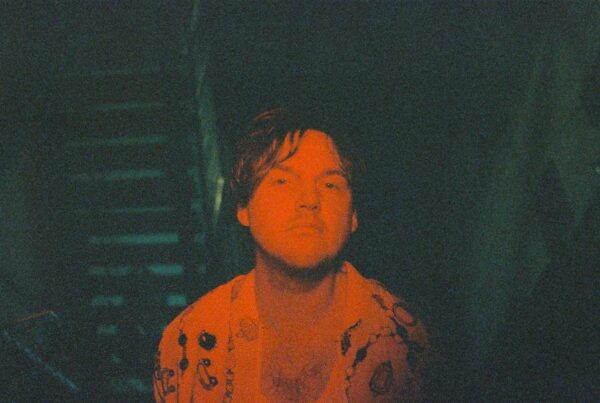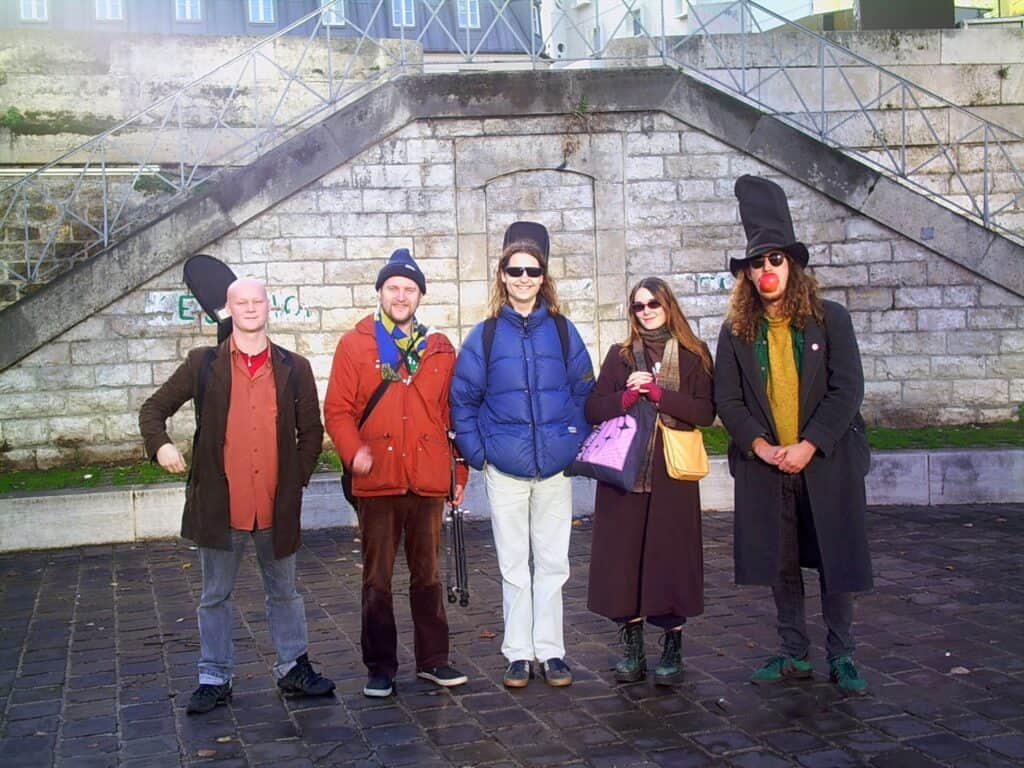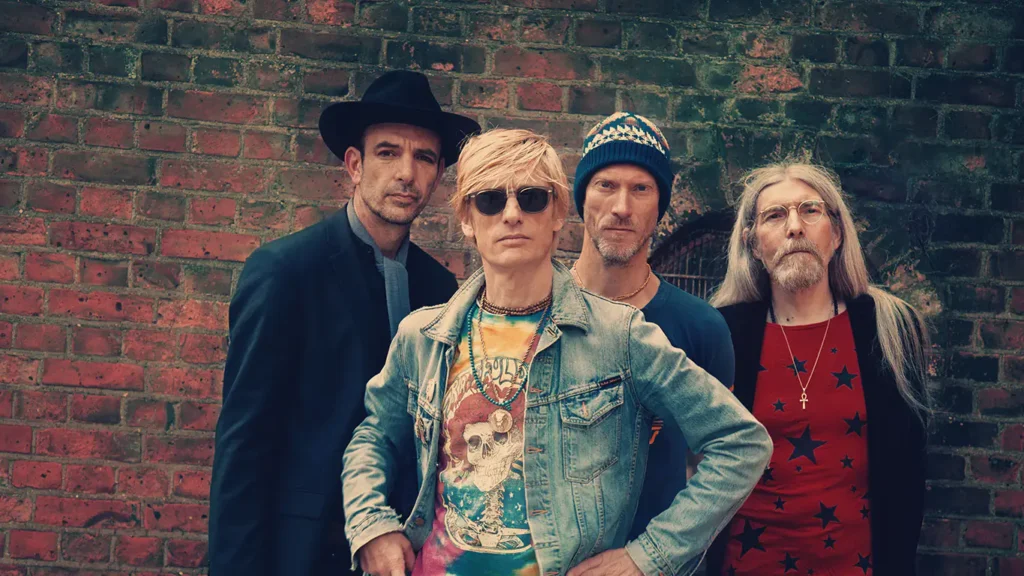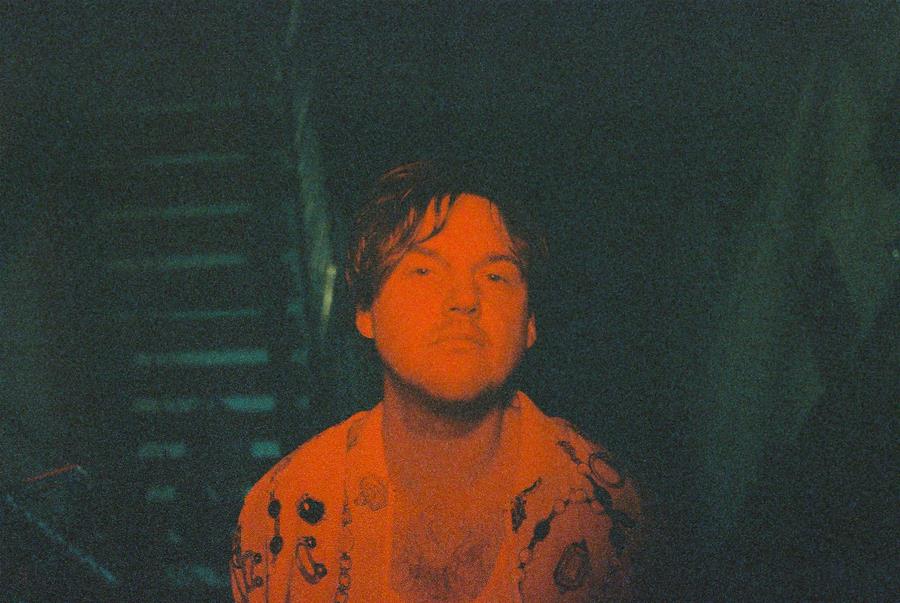Starting out in the film industry as a first-time director is tough even when you’ve worked in Hollywood for years, but it’s something else entirely when it’s an attempt to tell a story using a striking, new visual style that may baffle some and dissuade many from investing in your project. Luckily for Kit Monkman, co-director (along with Marcus Romer) of upcoming Yorkshire-based drama film ‘The Knife That Killed Me’, his project has been realised and we sat down for a chat about his experiences making a feature film for the first time.

Soundsphere Magazine: To kick us off, can you tell us what the film’s about?
Kit Monkman: It’s quite a conventional story really, about a kid who goes to a new school and confronts a lot of the issues you’d imagine you’d have to confront at a new school, stuff like making friends, bullying and meeting girls. In his case, he makes a series of bad decisions that ends his life. It’s the way we tell the story that’s the most distinctive thing about the film because it’s an attempt to do what film very rarely tries to do which is to tell a first-person narrative from inside someone’s head so you’re seeing everything in a sense through his eyes rather than through some objective reality.
SM: How did you come to decide on the visual style of the film? It’s a very striking one.
KM: Well, my interest as an artist has always been in the relationship between an audience and the the work and the level of interactive engagement there is. In my installation work [with KMA] the premise is that the audience are the performers. If you put that kind of installation work at one end of the interactive scale then film is at the opposite end in the sense that no matter how engaging films can be they very much put you in the role of spectator. You’re looking through a pinhole in to another world and there’s this gap there between the spectator and the film. I’ve always been interested in theatre and the theatrical relationship that audiences have with work. That’s entirely different from cinema, you go to a piece of theatre and you expect to have to suspend your disbelief and even collaborate in the whole creative process – which is part of the joy of the experience. Films were more similar in their early days but now almost all film-makers, despite the fact that they’re making completely different film genres, tend not to question the material reality that they’re presenting. I was interested in using new technology, green screen in particular, to play with some of those elements that film has lost, its theatrical relationship with its audience and that playfulness with its form.
SM: That aesthetic certainly gives it an intensity that some other films don’t have.
KM: It’s perhaps quite a demanding film to look at, but if that makes it sound a little like a densely intellectualarthouse film, then it’s definitely not. The story is pacey and engaging but the experience definitely needs a level of collaborative engagement, much like theatrical productions, to enjoy because of its new visual language. You definitely have to bring something of yourself to it, and people that do that will definitely get far more out of it.
It’s interesting actually because almost immediately after we finished shooting the film, Tom Wexler [the other half of installation duo KMA] and I had to go to Macau to put on a piece of ours and I remember looking back at what we’d filmed on my laptop in a sweaty hotel room and just thinking “shit”. At that point the only thought I had was to avoid total humiliation. How could I create something coherent out of this stuff? It was a genuine response and it illustrates how uncertain we were about what we were trying to do. It was a big experiment.
SM: I definitely think it works. How did you come to direct the film in the end?
KM: There are two routes really to how I got involved. I first got involved in film doing visual effects, and the first film I did was a kids’ movie that was set in a magic environment so it had some license but it was still pretty conventional, and I remember sitting with the producer who actually became the producer on this film, at the pub while we were waiting for some renders, and I was just talking to him about how the visual effects language is only ever used to create ‘believable’alternative realities like fantasy worlds, planets, plane crashes and things. Wouldn’t it be interesting to make a film that was unapologetically theatrical? Couldn’t we do something different with this new technology?
That planted the seed, and I’ve been a long-time friend of Marcus’[Romer, Monkman’s co-director] and he and I started talking about the possibility of making a film together on a very small scale. I told him I’d like to do something on green screen because of my desire to do a really theatrical movie. He was looking for scripts at the time and came across ‘The Knife That Killed Me’(a book by Anthony McGowan) and we discussed it. It looked like that plot of that was actually the perfect vehicle for us to make the film in the style that we wanted. That was the genesis of it really, Marcus and I ended up writing the script based on the book, and we were off from there.
SM: How was it working with another director? Did you have set roles that you stuck with?
KM: Yeah we did sort of. I controlled the visual aspects and he was responsible for the actors and the performances. Inevitably because it was a collaboration all the edges are blurred but that was the basic premise.
SM: What would you say were the defining experiences of your début film?
KM: That’s ongoing really, but I think I have a lot more respect now for film-makers because of just how demanding a thing it is to do. To put a film together at every level, piecing together all of the elements from the script all the way through to post-production, putting together that jigsaw while trying to keep sight of the story you’re trying to tell. I felt like a complete novice in that sense, I’ve definitely learnt a lot and I’ve got a lot more to learn, and I’m looking forward to doing it again. That added sense of respect is definitely there though.
That’s a fairly general response to film-making, my second ‘defining experience’ is more specific to this film. Whatever the audience response is, I think we made some very brave choices and I don’t regret any of those at all. I would make another film differently of course, but I am very pleased about what we chose to do in this case and why we chose to do it. The whole creative team was fantastic and I will look back on it fondly, which is great because when you’re trying to do something so complicated it can easily turn out the other way.
SM: You had quite strict time constraints during filming. Did that have a positive or negative impact on the whole process?
KM: Honestly I think it was a good thing, it’s possibly quite damaging to have too much freedom. Obviously we had to cut some corners and maybe the film could have been better if we had longer, but equally it could have been worse. There’s something about any kind of creative constraint that just makes you do what you can with whatever you’ve got. The unusual thing about this film was that that five week process was essentially just mining for raw material. When you shoot on set in a conventional film it is absolutely defined by what you know the final image is going to be, whereas we had an idea about how we wanted to visually interpret the script, but actually most of the direction for the film happened after the filming finished, tweaking and laying it out, trying to find a basic structure for what we had filmed. We had a lot of freedom in that sense, but we could only use the raw material we had. If we’d had more time and thus more material then in a way that whole process could actually have become too much, so it was probably a good thing.
SM: It helped that you filmed on green screen in that sense then, many other film-makers would definitely have had problems.
KM: Oh definitely, yeah.

SM: How did the deal with Universal (the film’s UK distributors) come about?
KM: Everybody who is a first time director struggles to sell a film, and if you’re a first time director doing something that people struggle to get their head around, then it’s even harder. Lots of people thought we were mad.I think, you’d have to ask Universal what it was that they saw in the project, but I think they took a punt on us because they were taken by the interesting approach and thought it was a good script, so they bought the UK distribution rights for downloads and DVD so they’re releasing that stuff in September. Any theatrical screenings are down to us.
SM: How has anyone who has seen it at preview screenings and things reacted to the film?
KM: The film’s only been screened about five times to groups of fifty-ish, so maybe three or four hundred people have seen it, but we’ve had some incredibly positive responses for the film and one of the top commissioners for the BBC said it was one of the most exciting things she’d seen for ages, so that’s good. Authors and critics have had a good reaction to it too, but we’ve struggled to get the same response from the big gatekeepers in the film industry who don’t really know what to do with it. It’s quite interesting because we don’t quite yet know how that will pan out, whether the people that really like it will champion it and help it break through to a bigger audience. Universal are definitely part of that process, and there are individuals there that really like it, but at the same time they’re not going to risk putting loads and loads of promotional money behind it because they don’t know who or where the audience is. None of us know really. Whether it’s gonna become a cult underground film or whether it’s gonna get to a bigger audience remains to be seen.
SM: So are you as yet unsure as to whether the film will see a theatrical release?
KM: Well we’re planning a Kickstarter campaign, as much for personal awareness as for fundraising, but the idea with that is that we’ve got a good few releases planned. There’s the Universal release in September which is DVD and downloads but then we’re also hoping for a limited theatrical release which will be at places like City Screen in York, and other independent cinemas in a few places around the country. Before that we’re going to be having a world première at the National Media Museum in Bradford which suits it perfectly because it’s an amalgam of lots of different media forms. We’re also planning to simultaneously live stream the première globally for free so if anyone wants to see it they can. They won’t be able to download it, but the stream will be there so hopefully we’ll get a wider audience and what we’re planning to do, using the Kickstarter funds, is to organise a series of pop-up screenings in odd, slightly different venues like disused buildings and make them feel a little bit different – so it’s not your typical cinema release.
Hopefully we’ll be able to do all that stuff simultaneously and if they don’t want to do a big-scale screening like that they can always just do it with a few friends. The main aim is to try and create a community around the film.

SM: Following on from that, we were wondering how you’d go about selling the film to someone you wanted to go in to the cinema?
KM: One of the conundrums of our culture is that people always seem to be longing for something different and saying “God, why are people always making the same stuff?”The obvious answer to that is that the same old stuff is incredibly easy to sell. It’s very easy to sell that sort of stuff because the market likes clearly defined products. Marketing companies know how to sell them, what to sell them as and who to sell them to, but when something comes along that is actually very different, whatever the end market might think, the response in between is one of befuddlement. no one’s prepared to spend a lot of money on marketing something that doesn’t fit the mould so you’re then in a conundrum.
With the internet though it should be possible for us to go and find our audience directly, and that’s what we’re trying to do and in order to do that we have to decide who our audience is. I would rather that this film, because it’s different and has its own voice, image, feeling and attitude ,I’d rather have a strongly negative response from 90% of people as long as 10% of people really ‘get it’. Hopefully if you make something strong it’s gonna get a reaction even if it’s not always positive. In this case we’ve had some amazingly positive reactions, we’ve tried to target those people who like to embrace the new and the different, and to accept a challenge. There may be a bigger audience for it but initially we just want to be as specific as we can about what’s interesting about it and target those people who look at the trailer and think it looks interesting. Maybe that’s not enough for a hugely commercial following but we’ve decided to be unapologetic about the fact that it may not be for everybody but just for those that are taken by the ideas in the film and almost come to champion it.
SM: And finally, what’s next for you personally?
KM: What I’ve learned from this experience will drive me on to my next project, and I’ve definitely learned here that I actually have a lot to learn. The complexity of the film-making process means that I’m in awe of those who can do it masterfully. I think we’ve learned that there is mileage in this unconventional approach even if it needs to be tailored and made more sophisticated, maybe even refined, but I absolutely don’t want to make a conventional movie because lots of people can do that better than I could but I’d like to do something else in this sphere, different to this film but another theatrical hybrid perhaps. I am absolutely committed to doing another film though I can’t tell you what I’m working on just yet!
https://www.youtube.com/watch?v=vu689ONneAI
The Knife That Killed Me is slated for release on download and DVD in September 2014, and is expecting a limited theatrical release


